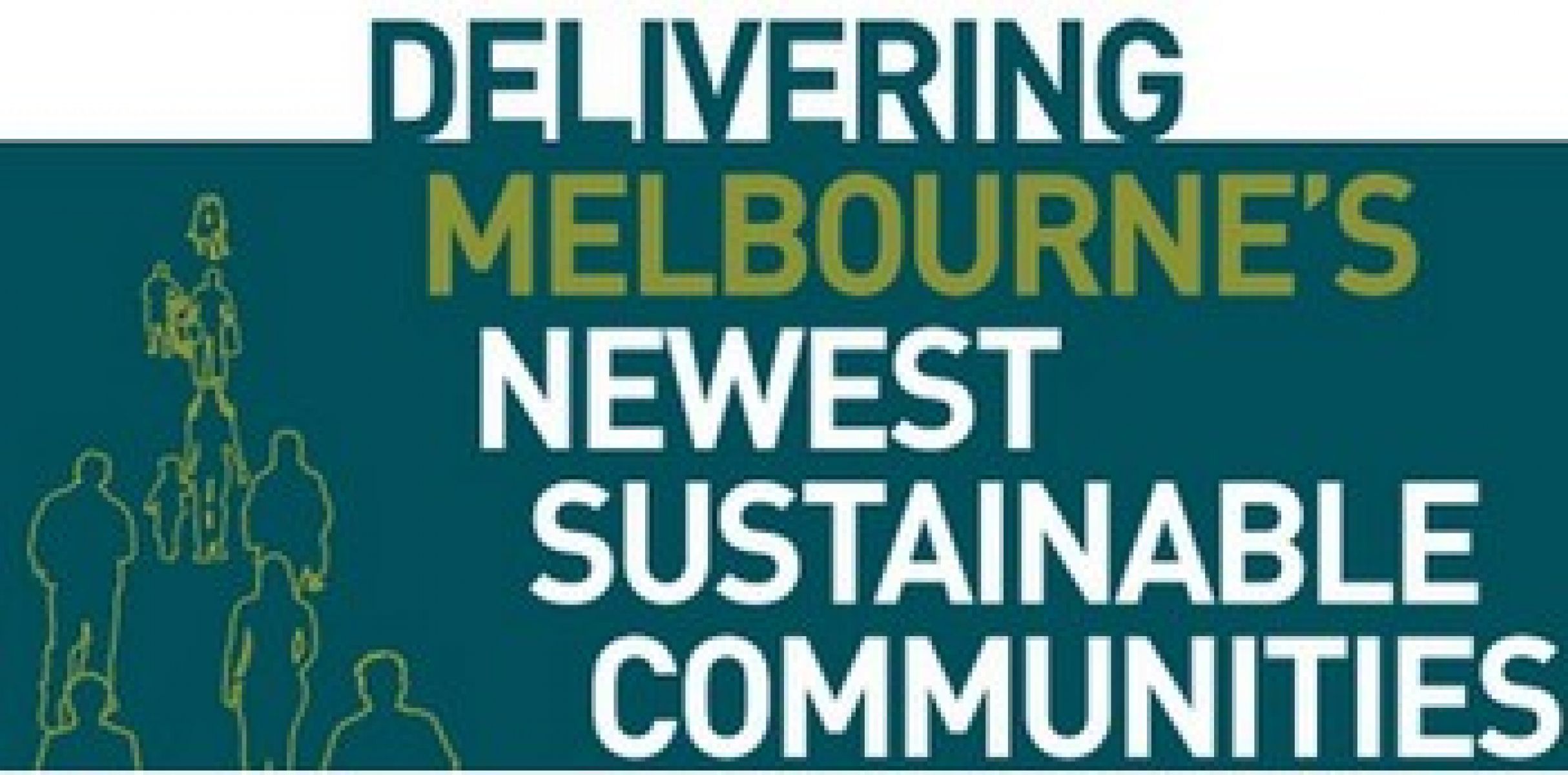On this page:
About the initiatives
In 2008 two integrated policy statements were released, Melbourne 2030: a planning update - Melbourne @ 5 million and The Victorian Transport Plan. These documents provided a long-term plan for managing Melbourne's growth and outlined a number of initiatives to ensure that the city remained liveable and sustainable.
Delivering Melbourne's newest sustainable communities was a culmination of work focused on land use, transport and environmental initiatives. It took an integrated approach to land use and transport planning so that infrastructure and essential services are delivered as new communities in the growth areas of Melbourne are developed.
Initiatives delivered as part of Delivering Melbourne's newest sustainable communities:
- A review of the Urban Growth Boundary
- An alignment for the Regional Rail Link
- An alignment for the Outer Metropolitan Ring/E6 Transport Corridor
- Establishment and management of the proposed grassland reserves in Melbourne's west.
This policy was informed by a number of separate but interlinked documents, including independent advice and specialist reports for the Urban Growth Boundary and transport projects, and a Strategic Impact Assessment Report to meet the requirements of the Environment Protection and Biodiversity Conservation Act 1999.

Amendment VC68
Amendment VC68 expanded Melbourne's Urban Growth Boundary, and put in place Public Acquisition Overlays for the proposed 15,000 hectare native grassland reserve, the Regional rail Link and the Outer Metropolitan Ring/E6 Transport Corridor.
Strategic impact assessment
The Strategic Impact Assessment is an assessment of the impacts arising from an expansion of the Urban Growth Boundary, the Regional Rail Link and the Outer Metropolitan Ring/E6 Transport Corridor on matters covered by the Commonwealth Environment Protection and Biodiversity Conservation Act 1999. The Strategic Impact Assessment seeks to identify appropriate mitigation measures for any impacts of these initiatives on matters of national environmental significance.
On 2 February 2010, the Commonwealth Government represented by the Minister for the Environment Protection, Heritage and the Arts endorsed the program covering the expansion of the Urban Growth Boundary and the alignments for the Regional Rail Link and the Outer Metropolitan Ring / E6 Transport Corridor.
To enable the program of urban development to occur, the Commonwealth Minister approved actions for the development of Section 2 of the Regional Rail Link (west of Werribee to Deer Park) and the 28 precincts within the current Urban Growth Boundary.
The Commonwealth Minister also approved prescriptions for the Golden Sun Moth, Natural Temperate Grassland, Matted Flax-lily, Striped Legless Lizard, Spiny Rice-flower, Grassy Eucalypt Woodland, Growling Grass Frog, Southern Brown Bandicoot and migratory species. These prescriptions will be used in the approval of precinct structure plans, transport infrastructure, extractive industries and the development approvals within the program.
Key outcomes:
- Simplified State and Commonwealth biodiversity approvals for the program early in the planning cycle.
- Increased certainty and reduced cost for development proposals where they meet the conditions of the approvals.
- A ready supply of native vegetation and species offsets that developers will purchase from the Government.
- A commitment by the Victorian Government to enhanced protection of a network of key biodiversity values that are retained inside the Urban Growth Boundary.
- Advance mitigation of the impacts of clearing biodiversity values.
- Strict adherence to the principles and standards required under Victoria's native vegetation policy framework and species regulations.
- A commitment to monitoring and full public reporting on the implementation of the Program and its approval conditions under the Commonwealth legislation.
Growth Areas Infrastructure Contribution
The Growth Areas Infrastructure Contribution is an essential component of the Delivering Melbourne's newest sustainable communities program.
The Growth Areas Infrastructure Contribution will deliver revenue that will help pay for essential State infrastructure and services in the new growth area communities. It will also enable the infrastructure to be delivered sooner. It is estimated that revenue from the Growth Areas Infrastructure Contribution will account for up to 15 per cent of the total cost of new State infrastructure.
The Growth Areas Infrastructure Contribution will only apply to land brought into the existing growth areas since November 2005, and to all land within the new Urban Growth Boundary that is zoned for urban development (i.e. the Urban Growth Zone in the new areas).
The mechanism to secure this revenue is set out in the Planning and Environment Amendment (Growth Areas Infrastructure Contribution) Act 2010.
More information about Growth Areas Infrastructure Contribution.
Response to submissions
A public consultation process informed the development of Delivering Melbourne's newest sustainable communities.
The Public Consultation Final Report on Submissions outlines how submissions were considered, where changes were made to the proposals and a summary of issues raised and the response to those issues.
Page last updated: 09/06/23